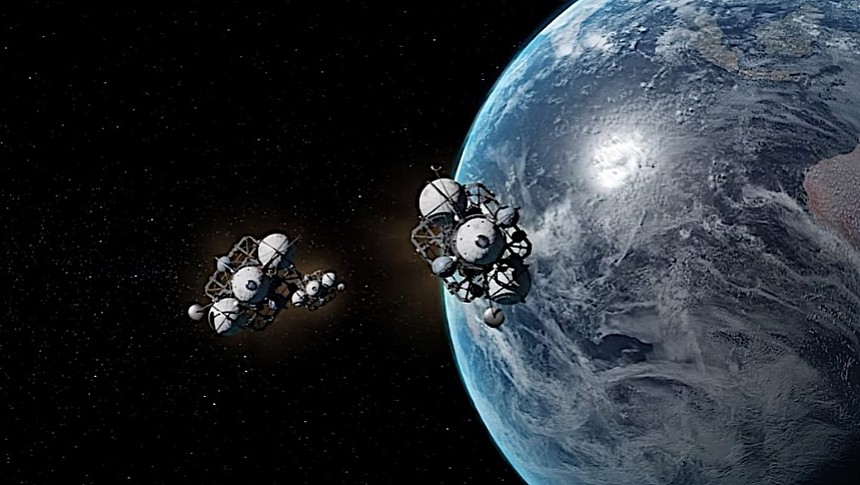Back in the 1950s, when the larger humanity was just beginning to ponder trips beyond the boundary of our world by means of rockets, visionaries were already dreaming of trips to the Moon and the neighboring planets, some of them so large in scope they were akin to the first colonization moves.
One of those visionaries was German rocket scientist Wernher Von Braun. A member of the Nazi Party for a while, and responsible for coming up with the German V-2 rockets launched against the UK at the height of the war, von Braun went on to become, in the post-war history books, the man largely responsible for the American space exploration program.
The German is the man who would eventually give America the Saturn V rocket that formed the backbone of the Apollo Moon exploration program. The thing was flown for the first time in 1967, but von Braun was targeting the Moon long before that.
At the beginning of the 1950s, for instance, the man was already envisioning trips to the Moon not by a single spaceship carrying a small number of astronauts, but in clusters of such vessels carrying tens of scientists and the supplies they would require for extended stays on the lunar surface.
He even went one step further and imagined the landers people would use to descend down to the surface of the satellite.
Like many ideas for space tech born during that decade, von Braun's dreams of a fleet of spaceships going for the Moon remained just that, dreams. We have no way of knowing how they might have looked like in flight, how they would have behaved, and what they would have accomplished.
But, luckily, we can image that too, based on what we know about such concepts. What's more, thanks to modern-day tech, we can even get a visualization of these things in action.
von Braun's idea called for the in-orbit assembly of a lunar lander larger than the Saturn V rocket that came later. The ships would have been fueled by nitric acid and hydrazine and powered by a mercury-vapor turbine.
Several such ships would have needed to be made, some to carry as many as 50 people to the surface of the Moon, and several others to be used as cargo ships for all the supplies they would have needed.
von Braun's idea was just a stepping stone to the much larger dream we humans have of landing ourselves on the surface of Mars.
A taste of how the ships might have looked in orbit, en route to the Moon, and on the surface, can be found in the video below, put together by space animation specialist Hazegrayart. Another instance of a future that never came to pass.
The German is the man who would eventually give America the Saturn V rocket that formed the backbone of the Apollo Moon exploration program. The thing was flown for the first time in 1967, but von Braun was targeting the Moon long before that.
At the beginning of the 1950s, for instance, the man was already envisioning trips to the Moon not by a single spaceship carrying a small number of astronauts, but in clusters of such vessels carrying tens of scientists and the supplies they would require for extended stays on the lunar surface.
He even went one step further and imagined the landers people would use to descend down to the surface of the satellite.
Like many ideas for space tech born during that decade, von Braun's dreams of a fleet of spaceships going for the Moon remained just that, dreams. We have no way of knowing how they might have looked like in flight, how they would have behaved, and what they would have accomplished.
But, luckily, we can image that too, based on what we know about such concepts. What's more, thanks to modern-day tech, we can even get a visualization of these things in action.
von Braun's idea called for the in-orbit assembly of a lunar lander larger than the Saturn V rocket that came later. The ships would have been fueled by nitric acid and hydrazine and powered by a mercury-vapor turbine.
Several such ships would have needed to be made, some to carry as many as 50 people to the surface of the Moon, and several others to be used as cargo ships for all the supplies they would have needed.
von Braun's idea was just a stepping stone to the much larger dream we humans have of landing ourselves on the surface of Mars.
A taste of how the ships might have looked in orbit, en route to the Moon, and on the surface, can be found in the video below, put together by space animation specialist Hazegrayart. Another instance of a future that never came to pass.










